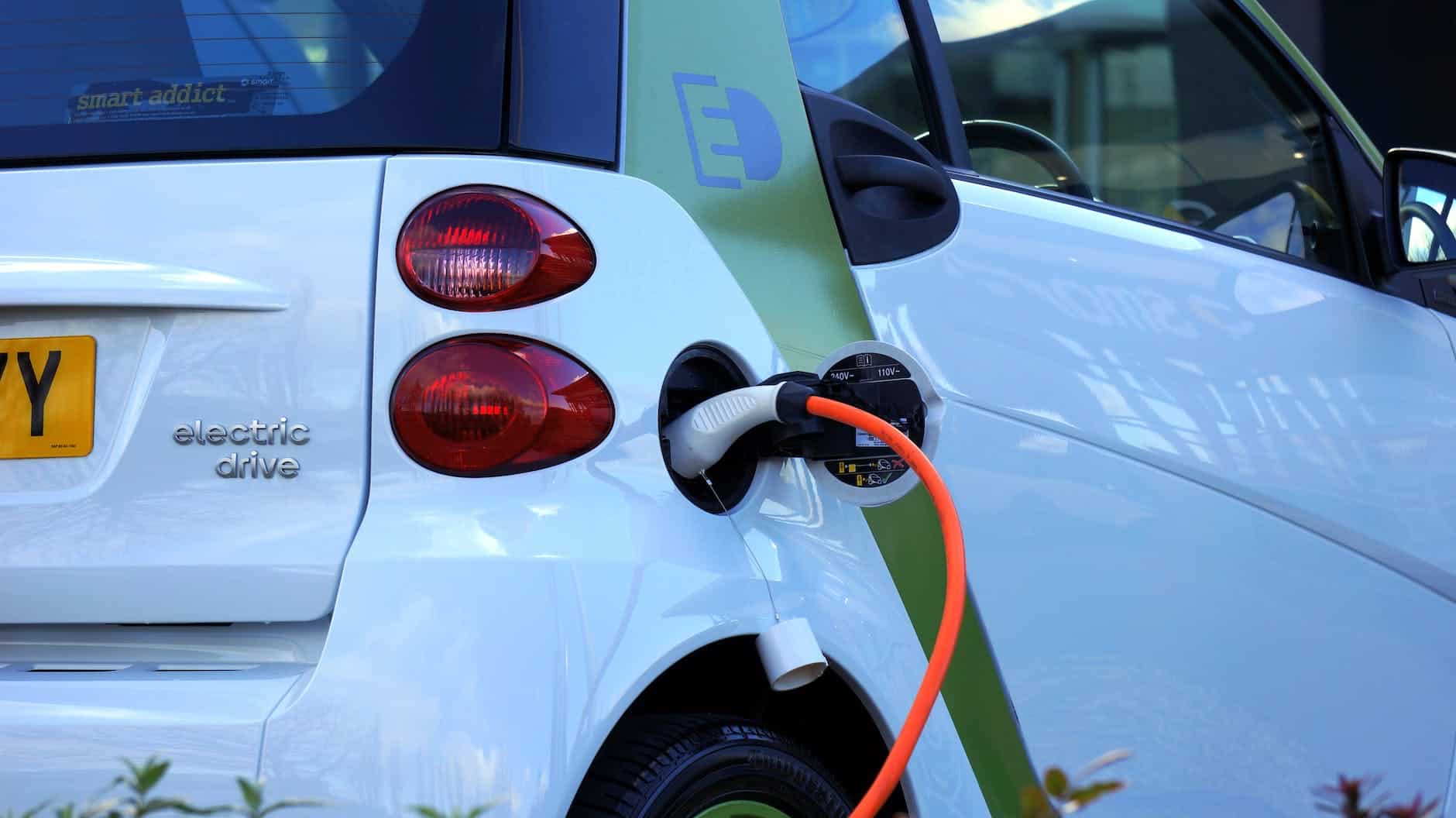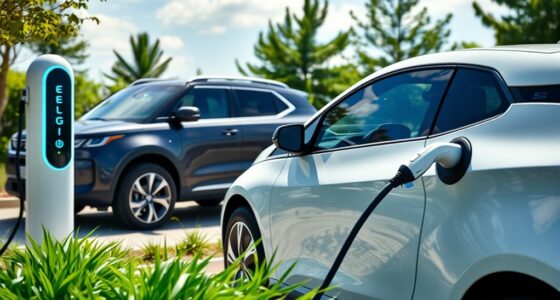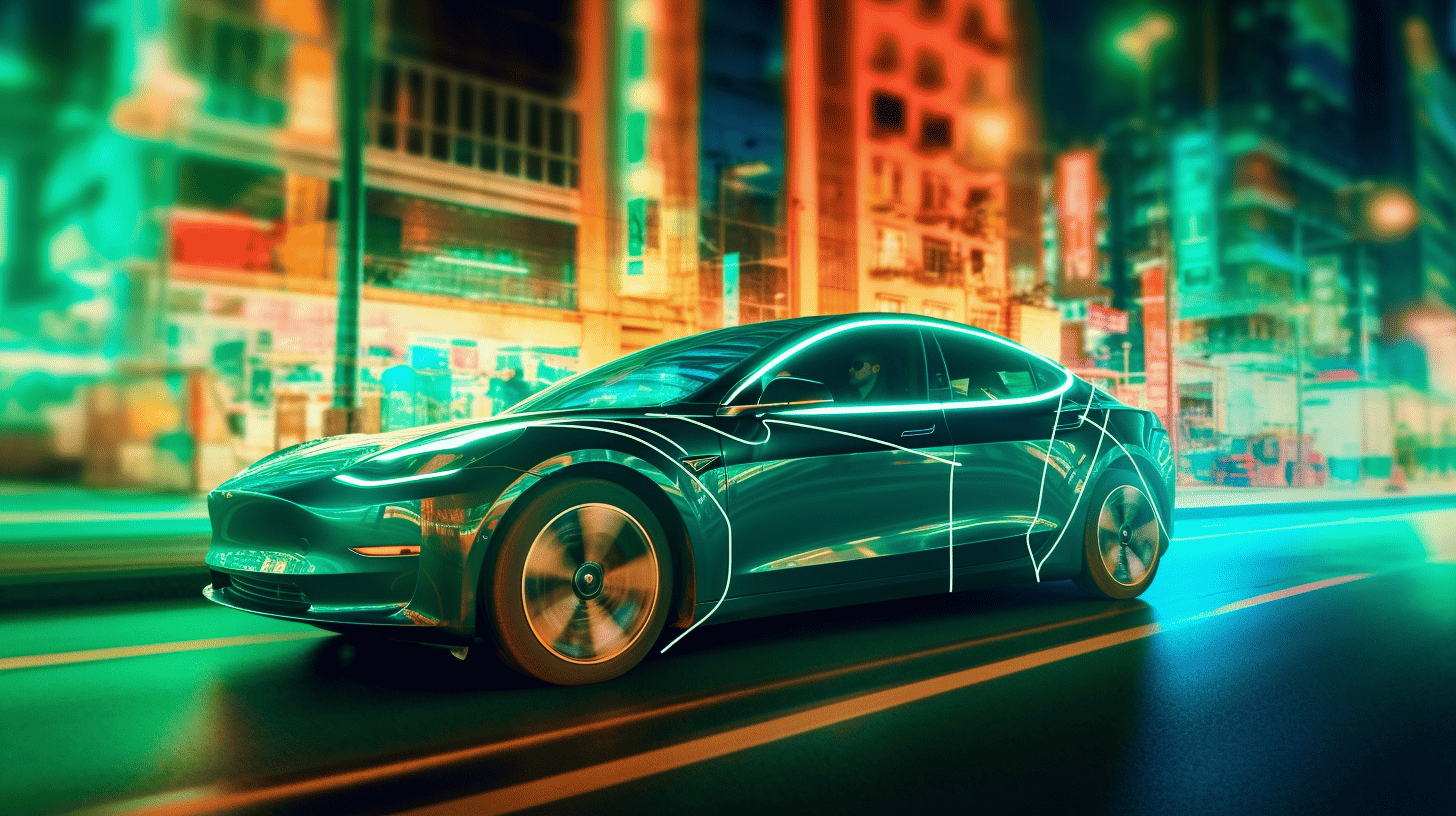As an expert in electric vehicles, I’m here to share that the future of transit lies in electrification. The era of fuel-driven engines is coming to an end, and it’s our moment to adopt a cleaner, more sustainable, and efficient mode of transportation: electric vehicles (EVs). In this piece, I will outline why EVs represent the future of transportation and offer 10 compelling arguments why they surpass conventional gasoline vehicles.
The advantages of EV technology go beyond just being environmentally friendly; they also offer drivers improved performance with less maintenance and lower running costs compared to their petrol equivalents. Electric motors provide instant torque, allowing them to accelerate faster than gasoline-powered cars. And since there’s no need for oil changes or other routine maintenance tasks such as spark plug replacements, owning an EV saves both time and money in the long run.
But these benefits don’t stop there – electric vehicles also have unique features that make life easier for owners. For example, many modern EVs come with wireless charging capabilities so you can charge your car without having to mess about with cables! Plus, some new models even offer over-the-air software updates delivered directly from manufacturers – meaning fewer trips to the mechanic!
So if you’re looking for a dependable ride that won’t break your budget while providing incredible performance – then look no further than electric vehicles! Keep reading to find out my top 10 reasons why EVs are the future of transportation.
Cost Benefits
The future of transportation beckons with the promise of electric vehicles. With their cost-efficiency and fuel-saving features, they offer a viable solution to daily commuting expenses. The maintenance costs are significantly lower when compared to traditional cars, due to fewer moving parts in an EV’s motor. Battery pricing has become more affordable over the years, making EVs increasingly attractive for those on tight budgets.
Furthermore, government incentives such as tax credits can help alleviate some of the upfront costs associated with buying an EV. This makes it easier for people from all walks of life to purchase these vehicles. And since most EVs operate solely off battery power, there is no need to pay for gasoline or oil changes which further contributes to cost savings down the line.
In addition, many cities have adopted policies that support electric vehicle adoption by providing access to charging infrastructure and other related benefits like reduced parking fees and tolls. These initiatives make owning an EV even more appealing than ever before and pave a way towards greener urban living.
Environmental Impact
Electric vehicles are the future of transportation because they have a much lower environmental impact than conventional gasoline-powered cars. EVs generate no tailpipe emissions, making them far cleaner both in terms of air quality and climate change. This is beneficial for cities with high levels of air pollution as electric cars can help to reduce overall emissions significantly. Additionally, while gasoline-powered vehicles still emit carbon dioxide into the atmosphere, electric cars produce zero-carbon emissions, meaning that they have virtually no negative effect on our environment.
What’s more, electric vehicles don’t require any fuel other than electricity – which has become increasingly renewable over time – so their total lifecycle is much less damaging compared to fossil fuels. As such, it’s clear why these cars are being touted as an important part of the global effort to combat climate change. With battery technology developing at a rapid speed and charging times becoming shorter, it’s easy to see why many people believe that EVs represent the most promising form of transport for the future.
The benefits associated with reducing CO2 emission from motorized travel make electric vehicles an appealing option for consumers looking to do their part for the environment. Moving away from gas-guzzling automobiles towards EVs would allow us to cut down on emissions substantially and work towards preserving our planet for generations to come.
Range And Convenience
Electric vehicles offer an unparalleled range of convenience and availability. They are the perfect combination of power, performance, affordability and efficiency, offering drivers a reliable form of transportation with no emissions. With electric vehicle range increasing rapidly each year, drivers can now drive up to 400 miles on a single charge! This increase in range has been made possible due to advancements in battery technology and improved EV charging infrastructure.
EV charging options have also increased significantly over the years, making it easier for owners to recharge their cars whenever they need to. In addition to home chargers being readily available , public EV charging stations are becoming increasingly more accessible across the country, allowing people to top-up their cars whilst out and about. Many of these public charging points come equipped with multiple connectors so that several EVs can be charged simultaneously – further enhancing the convenience factor for drivers.
Today’s electric vehicles provide a wide variety of convenient features such as remote start systems which allow users to preheat or cool their car before getting into it; wireless phone charging pads; quick acceleration; smooth braking; and regenerative braking which converts kinetic energy back into usable electricity for added driving range. As electric vehicle innovation continues at breakneck pace, we will see even more features emerge that make owning an EV even more enjoyable. Moving forward towards the future of transportation safety features must also become priority.
Safety Features
Electric vehicles have come a long way in terms of safety features, making them the preferred choice for transportation.
- Here are some reasons why electric vehicle safety is superior to traditional modes:
- Accident Avoidance: Many electric vehicles feature advanced accident avoidance technology such as autopilot and lane-keeping assistance that can detect objects in front and behind your car and take corrective action when needed. This helps reduce the risk of accidents and improve road safety.
- Auto Safety: Electric vehicles also come with an array of auto safety features like airbags, seat belts, stability control systems, anti-lock brakes, traction control systems, blind spot monitoring and more. These help protect you from harm if there’s an accident or other emergency situation.
- Electric Safety: Electric cars are built with robust components which mean they require less maintenance than traditional petrol/diesel cars so they don’t run into problems as often. This means fewer trips to the garage for repairs so overall it makes them safer on the roads.
Thanks to these cutting edge technologies, electric vehicles offer drivers peace of mind while out on the road – something that cannot be said about petrol/diesel powered automobiles. With all these advantages, it’s no wonder that electric vehicles are quickly becoming the future of transportation.
Power Source Advantages
Electric vehicles offer many power source advantages that make them a great option for the future of transportation. First, electricity savings over traditional fuel sources can be significant. Not only is electric charging more cost-effective than filling up with gasoline or diesel, but EVs also use their power very efficiently so you get more miles out of every kilowatt-hour used. Also, because most electricity production today comes from renewable sources like solar and wind, this means less reliance on fossil fuels in general.
Second, when it comes to charging flexibility, electric cars have an edge here too. With public chargers popping up all over the place and home installation becoming simpler every year, there are plenty of options available that fit your lifestyle and budget. Plus, some new models even allow wireless charging! That’s right – no cables necessary just park your car above a special pad and let physics do the rest!
Finally, when it comes to total cost of ownership (TCO), electric vehicles often come out ahead due to the long-term fuel savings they provide compared to petrol/diesel powered cars. The initial sticker price may be higher but the money saved on fuel will soon offset that difference as you rack up the miles without having to stop at gas stations again. All these factors add up to make EVs an attractive choice for those looking towards a greener future in transportation.
Recharge Availability
The future of electric vehicle transportation is bright, but there are still some hurdles to overcome. One major hurdle is the availability of recharge stations for when drivers need to refuel their vehicles. With an increasing amount of people switching from gasoline-powered cars to electric vehicles, it’s important that we have a reliable and accessible network of EV charging infrastructure in place.
Luckily, new technologies like battery swap stations and fast chargers make it easier for people to get back on the road quickly without having to wait hours for their batteries to fully recharge. Battery swap stations allow drivers to exchange drained batteries for fresh ones at designated locations so they don’t have to worry about running out of juice on the go. Fast chargers can reach up 800 volts which allows EVs to be charged much faster than regular charging stations. This technology could revolutionize the way we think about recharging our electric vehicles while making sure everyone has access no matter where they live or work.
Government support is key when it comes to expanding EV charging networks across different cities and countries since many private companies struggle with finding resources and funds necessary for this kind of project. Government subsidies will provide incentives for businesses who want create more efficient EV charging infrastructures, allowing us all take part in creating sustainable solutions together as we transition into a greener future.
Government Support
I believe that government support is key to the success of electric vehicles in transportation. Governments around the world are offering incentives and subsidies for buying electric cars, as well as tax breaks related to their use. Automotive regulations are also being introduced which require automakers to increase the number of zero-emission vehicles they produce over time. This will help create a more diverse range of models available on the market, allowing consumers more choice when shopping for an electric vehicle. Additionally, governments have been investing heavily in infrastructure developments like charging stations and battery swapping facilities, providing further encouragement for people looking to make the switch from petrol or diesel powered cars.
In addition, many governments are introducing policies designed to stimulate research and development into new technologies related to electric vehicles. These investments can open up opportunities for businesses who wish to develop products or services related to electrification, ultimately making it easier for consumers to access these technologies. All this combined means that electric vehicles are becoming increasingly attractive options compared with traditional petrol-powered ones – both financially and environmentally speaking.
The result is already evident: sales of EVs surged by 150% worldwide during 2020 alone! Moving forward, I’m confident we’ll continue seeing strong growth in this sector due to continued government initiatives and technological advancements that provide even greater benefits than before. As automation potential increases within electric cars too, so do the possibilities of what this technology can offer humanity going forward – but that’s a topic for another day…
Automation Potential
Electric vehicles have a huge potential for automation. This is because they are powered by electricity, and so can be operated remotely without the need for manual control. Automation allows electric vehicles to operate more efficiently and safely than traditional gas-powered cars. They are able to automatically adjust speed, manage traffic conditions, detect obstacles in their path, and even park themselves with little or no human intervention. Furthermore, automated electric vehicle systems can be connected to other systems such as smart grids and traffic management systems, enabling them to coordinate multiple operations at once.
The ability of electric vehicles to utilize automation technology opens up many possibilities for transportation innovation. For example, an automated fleet of electric taxis could be deployed in cities to reduce congestion and emissions while providing efficient transport services. In addition, automated delivery drones could be used to deliver goods from place to place quickly and cost effectively. Finally, autonomous shuttles could provide safe and reliable public transportation options in urban areas.
As technology advances further still, it is likely that we will continue see increasing levels of automation being integrated into electric vehicle designs. With this increased capability comes greater potential for transforming how we move people and goods around our communities – paving the way towards a safer and greener future of transportation. As the infrastructure grows stronger too on both the hardware side (charging stations) as well as software (navigation), these advancements will only become more prevalent over time.
Growing Infrastructure
Electric vehicles (EVs) have been heralded as the future of transportation for many years. This is due to their numerous advantages over traditional petrol-powered cars, such as reduced emissions, improved efficiency and cost savings. Now more than ever, infrastructure investments are being made in order to support this shift towards EVs. According to recent studies, there are currently over 200 thousand electric vehicle charging stations across the United States alone; with a further 5 million public charging points worldwide. These numbers show just how rapidly the industry is taking off and why it’s considered the future of transportation.
The growing network of EV charging stations has not only helped make EVs more accessible but also encouraged others to purchase one. With various investment initiatives from private companies and governments alike, manufacturers now offer an increasingly diverse range of models that suit different needs and budgets. Additionally, those who can’t afford an EV still benefit from them through access to cheaper electricity rates on certain days or times at some public charging points making them even more attractive options for commuters.
These developments have significantly increased the popularity of EVs amongst consumers and businesses alike – driving up sales year after year since 2017 when global sales figures first started increasing exponentially; further cementing their place as a viable alternative to petrol-powered vehicles both now and into the foreseeable future. As these trends continue to pick up speed, we will see even greater advancements in technology which will help drive adoption levels higher and accelerate our transition away from petrol-based transport solutions. Looking ahead, understanding changing consumer patterns will be key in ensuring that sustainable growth continues throughout 2021 and beyond.
Popularity Trends
Electric vehicle (EV) sales are growing rapidly. In the last five years, EV adoption rate has increased exponentially as consumers have become more interested in electric cars and public acceptance of them has grown. This increasing demand for EVs is a strong indication that they will be the future of transportation.
Consumer interest in EVs continues to rise, with some countries leading the charge when it comes to overall investment and public policy support for their development. For example, Norway leads the world in terms of electric car ownership per capita, while China’s government has invested heavily in infrastructure such as battery charging stations. These investments suggest that governments around the globe recognize the potential of EVs and are willing to invest resources into making them viable alternatives to traditional fuel vehicles.
The popularity trend surrounding EVs points toward a brighter future where these clean-energy vehicles are commonplace on our roads. With continued advances in technology and further investments from both private companies and governments alike, we can expect greater adoption rates over time as people begin to recognize the numerous benefits associated with owning an electric car. As long as consumer interest remains high, there’s no doubt that electric vehicles will continue to shape our transportation landscape for generations to come.
Frequently Asked Questions
How Long Does It Take To Charge An Electric Vehicle?
It’s easy to see why electric vehicles are the future of transportation – they’re better for our environment, more efficient and cost-effective long term. However, one major question that needs to be answered is: how long does it take to charge an electric vehicle? With advancements in technology, this critical aspect of owning an EV has become easier than ever before.
As a veteran analyst on the subject of charging electric cars, I can say with confidence that there are several factors that determine the duration of time it takes to charge an electric car. The main ones include:
- Type of Electric Vehicle Charging Station (AC or DC)
- Level Of Charge Required/Desired For Your Vehicle
- Battery Capacity & Charger Output Of Your Electric Car
In general, AC level 1 charging stations require between 3-12 hours depending on the state of your battery and other variables such as temperature and power output from the station itself. On the other hand, DC fast chargers usually only take around 30 minutes up to 8 hours – again dependent on all these same factors. Furthermore, if you have access to a high powered charger like Tesla’s Supercharger network then you can get even faster times – anywhere from 15 minutes to 1 hour maximum for full charges!
At the end of the day, no matter what type of charger you use or what kind of automobile you own; understanding how much time it will take to charge your specific model is key when considering buying an electric vehicle. This knowledge allows you make informed decisions about which options best suit your individual lifestyle needs while still benefiting both you and the planet at large.
What Is The Difference Between An Electric Vehicle And A Hybrid Vehicle?
When it comes to electric vehicles (EVs) and hybrid vehicles, there are some key differences that must be understood. As an EV analyst, I’m here to provide insight into the differences between these two vehicle types so you can make a more informed purchasing decision.
At its core, EVs use electricity as their primary power source while hybrids combine both gas-powered engines with electric motors for propulsion. This means that EVs rely solely on battery charges from charging stations or wall outlets in order to function; whereas, hybrids have access to stored energy from gasoline tanks and batteries which makes them ideal for longer trips when one cannot easily find a charging station.
Another difference between EVs and hybrids is cost efficiency. Generally speaking, EVs tend to offer better fuel economy than their hybrid counterparts due largely to the fact they don’t require any gas at all. Additionally, many states offer incentives like tax rebates or discounts on toll roads that help offset the initial purchase price of an EV over a hybrid. So if you’re looking for greater savings in the long run without sacrificing performance, then an EV may be right up your alley.
Ultimately, choosing between an electric vehicle and a hybrid really depends on factors such as driving habits, budget constraints and environmental impact considerations – but understanding what sets each type apart is essential in making sure you pick the best option for your needs.
Are Electric Vehicles More Expensive Than Gas-Powered Vehicles?
Electric vehicles (EVs) are becoming increasingly popular as the world moves towards a more eco-friendly future. But one of the biggest questions people have when considering an EV is their cost compared to gas-powered vehicles. According to research, on average electric cars can be up to 10% cheaper to own than traditional petrol or diesel cars over four years:
- EVs usually require less maintenance and servicing costs
- Cheaper road tax fees for many EV models
- Lower fuel costs due to electricity being cheaper than gasoline
- Potential government subsidies or grants available in some countries
As an analyst in the field of electric vehicle technology, it is important to consider that while upfront costs may be higher with EVs, they offer long term savings and environmental benefits that make them worth investing in over time. For example, In Norway and France, electric car owners pay no taxes for owning an electric car and benefit from free parking spaces as well as express lane access which allows them to bypass traffic queues during peak hours – all together saving thousands of dollars annually!
When comparing EV’s against traditional gas-powered vehicles there are other factors such as range, charging infrastructure availability and performance characteristics that need to be taken into consideration too; however if you’re looking at overall cost efficiency per mile driven then electric vehicles are definitely your best bet. With advances in battery technology, driving ranges are improving rapidly whilst prices continue to fall making them even more attractive investments for those who care about both their wallet and the environment.
Are Electric Vehicles Available In All Countries?
Electric vehicles are becoming increasingly popular as people become more aware of the environmental benefits they offer. But what about availability? Are electric vehicles available in all countries? In this article, I’ll explore the current state of electric vehicle availability and discuss why it matters for the future of transportation.
When it comes to electric vehicle availability, there is a wide range among different countries. Some countries have been quicker than others to embrace the technology and make them widely available, while other countries still lag behind. The United States has made progress towards making electric cars more accessible with tax credits and other incentives, but there’s still work to be done before they reach full availability across all states. Other countries like Norway and Germany have already seen great success in getting their citizens into electric cars thanks to generous subsidies and access to charging infrastructure.
There are many reasons why it’s important that electric vehicles become available around the world. Here’s a quick list:
- Reduced Carbon Emissions: Electric cars emit significantly fewer pollutants compared to gas-powered cars, meaning less strain on our environment
- Lower Maintenance Costs: Electric cars tend to require much less maintenance than their gasoline-powered counterparts, leading to lower costs over time
- Improved Air Quality: With no emissions from exhaust pipes, air quality can improve dramatically when switching from gas-powered vehicles
- Increased Efficiency: Electric motors are highly efficient at converting energy into motion which helps maximize fuel savings
By supporting policies that promote wider adoption of electric vehicles, governments can help ensure that everyone has access to clean, efficient transportation options. This could mean providing incentives for buying an EV or investing in public charging infrastructure so that drivers don’t need to worry about where their next charge will come from. It also means educating consumers about the benefits of EVs so that more people can understand how switching away from gas-powered cars can help reduce pollution levels and benefit society as a whole.
In order for us to create a greener future centered around sustainable transportation solutions, we must ensure that electric vehicle availability isn’t restricted by geographical boundaries or economic constraints. We need governments around the world to take bold steps towards incentivizing EV ownership if we’re going to see widespread uptake in years ahead. Only then can we start seeing real progress towards transforming our transportation system into one powered by renewable sources of energy and free from carbon emissions.
Are Electric Vehicles Noisy?
Electric vehicles have become increasingly popular in recent years due to their environmental benefits. But one of the common questions that people often ask is, “Are electric vehicles noisy?” This article seeks to answer this question by looking at electric vehicle noise levels and how they compare with other types of cars.
When it comes to electric car noise, there are a few things you should know. First, most electric cars are generally much quieter than traditional gasoline-powered engines. Electric vehicles emit far less sound when accelerating or decelerating compared to an internal combustion engine because they don’t require as many mechanical parts like pistons and valves working together, meaning their operation is usually much smoother and more efficient. Furthermore, the lack of exhaust gases emitted from a fully electric motor leads to significantly reduced noise levels across all speeds.
In terms of overall quietness, some studies suggest that electric vehicles can be up to 40% quieter than conventional cars even at higher speeds on highways and city streets alike. Additionally, some automakers have taken extra steps in making sure their EVs are as silent as possible—for example, Tesla has designed its own special “Quiet Mode” for its Model S sedan which reduces the amount of audible noise coming from the vehicle itself while still ensuring optimal performance.
Overall, modern electric vehicles offer superb sound insulation technology and minimized mechanical sounds resulting in remarkable levels of quietness on roads compared to conventional petrol/diesel powered motors. Therefore it’s safe to say that if you’re looking for a peaceful ride experience then an EV might just be your best bet!
Conclusion
Not only do electric vehicles offer tangible benefits, but they also represent something beyond practicality; they symbolize progress and modernity. As more people make the switch to driving electric cars, it feels like we’re making strides toward building a better tomorrow – one where energy is clean, efficient, and renewable. It’s exciting to think about how this shift could shape our lives in years to come.
















